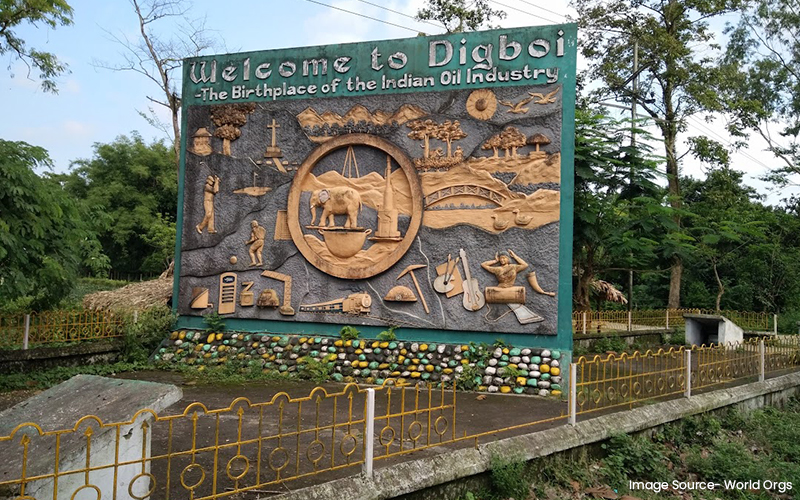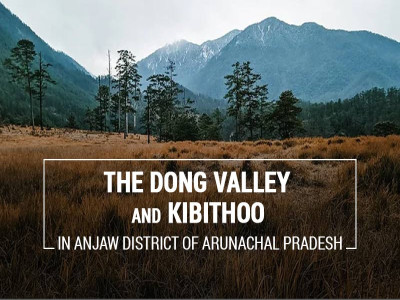
Here is Digboi’s Oil story – the birthplace Asia’s Oldest Refinery
The discovery of oil in India is accompanied by a fascinating story that is far too good to be true. Legend has it that, India's oldest oil field, Digboi in Assam, was named after a British engineer who exhorted his team to "dig boy, dig!" as they scoured the earth for liquid black gold.
While the name of the oil field, which is also one of the world's oldest, is clever wordplay, the truth is that it is most likely a corruption of 'Diboi Nallah' (note the absence of the 'g'), the local name for a rivulet that runs through the region.
The Inception
Oil was first mentioned in Assam by Lieut. R Wilcox of the 46th Regiment Native Infantry, who described it as "... rising to the surface at Supkhong with great bubbling of gas and green petroleum..." in his book Memoir of a survey of Assam and the Neighboring Countries, published in 1825.
The British discovered oil in Assam a decade before they realised how well the rolling hills of Assam would suit themselves to tea cultivation.
Lt. Wilcox's report was submitted in 1825, a year before the Treaty of Yandabo (1826), which established British authority in Assam. Several British adventurers, botanical surveyors, military officers, and travellers noted sightings of oil throughout their surveys in Assam from 1825 to 1845, when British officials advanced deep into the state. However, because oil was not yet a profitable commodity, they gave little attention to future exploration, especially since much of the machinery they utilised ran on coal rather than oil.
The discovery of petroleum in British North East India (NE)
In the last quarter of the 19th century, Assam’s oilfields became part of the larger global petroleum economy and thus played a key role in the British imperial economy.
Oil was largely exploited in colonial India by a number of British firms with complex alliances. During the first and second world wars, their output began to rise in order to supply British troops and enterprises in the United Kingdom.
With the emergence of global technology in the last quarter of the nineteenth century, the region's petroleum fields became part of a wider global petroleum economy, and commercial petroleum exploration became a reality. It was a time when geologists were still trying to figure out how to understand the science of oil and its commercial potential.
Post-Colonial Expansion
After Independence, Digboi refinery was maintained by Assam Oil, later the Indian Oil Corporation Ltd (IOCL) took over the refinery and marketing management of Assam Oil Company Ltd. with effect from 1981 and created a separate division. This division has both refinery and marketing operations with all the required state of the art facilities. This transformation at Digboi refinery brought about a massive change in work structure, advancing into the global trends. The corporate changes brought this refinery into the global map.
With the involvement of IOCL, the refinery at Digboi had an installed capacity of 0.50 MMTPA (million metric tonnes per annum). The refining capacity of the refinery was increased to 0.65 MMTPA by modernization of the refinery in July 1996.
Digboi today holds the title of being the world's oldest constantly producing oilfield. Currently, the Digboi refinery, which is now a subsidiary of the Indian Oil Corporation, has a capacity of roughly 0.65 million metric tonnes per annum (MMTPA). However, (IOCL) has already taken steps to increase the capacity of its refinery to 1.0 MMTPA.
Digboi Centenary Museum
A Centenary Museum was built to commemorate the refinery's 100-year history. The museum, which is next to the 'Discovery Well,' the country's first commercially viable oil well, explores Digboi's extraordinary history through a variety of multi-media exhibits.
The museum features a huge hall with a number of unique paintings on show. These images are shown here to take you on a journey through India's long history of oil refinery development. It demonstrates how Digboi came to be on the global map. Here you may learn about the history of oil production in Assam as well as other oil and gas-related facts. In addition, this facility gives up-to-date information about oil technology.
Final Thoughts
The historic Digboi Refinery is today known as the "Gangotri of the Indian Hydrocarbon sector." This blessed land today also provides employment to several thousands of people, it has adopted nearby villages converting them into model structures through its CSR initiatives. Despite its glorious history, the efforts taken up by the government or the concerned authority have not been up to the mark. Given the current scenario, where, globally the gulf world countries are looking out for Oil-based alternatives for its sustainability, it’s never too late to project an organization of this stature to come up with something that can have a judicious blend of its rich history and current hallmarks.
Disclaimer: The opinions expressed in this article are those of the author's. They do not purport to reflect the opinions or views of The Critical Script or its editor.

Newsletter!!!
Subscribe to our weekly Newsletter and stay tuned.

















Related Comments